Tan Szue Hann is a man on a mission. Through his role at MINIWIZ Singapore, he wants to see recycling become a way of life here, and show how design can elevate the value of materials considered ‘waste’.

September 13th, 2019
Our Ambassadors for Saturday Indesign 2019 are at the forefront of the industry. Find out what makes them tick in our profile series. First up is architect Tan Szue Hann – the Managing Director of MINIWIZ Singapore.

Tan Szue Hann in the MINIWIZ Singapore office. Photo by Khoo Guo Jie
MINIWIZ is a circular economy RD&D [Research, Design & Development] company that turns waste materials into architecture, interiors, furniture, products, fashion and anything else that is worthwhile and meaningful.
The great thing about what MINIWIZ produces is that sustainability credentials are matched by visual appeal. The company’s Polli-Ber Brick is the perfect example. This modular interlocking brick made with recycled plastic and agricultural waste is so beautiful that it will serve as the trophy for the winning team in our Saturday Indesign 2019 Debate!
Since Hann joined the company and established its Singapore office earlier this year, he has been busy not only spreading awareness of the MINIWIZ catalogue of modular building materials, furniture and objects, but also working with government to push toward circular economy initiatives.
We sat down on some of MINIWIZ’s own furniture (incorporating recycled materials, of course) for a chat about Hann’s goals for a more sustainable Singapore, and the kinds of solutions MINIWIZ can offer designers and their clients.
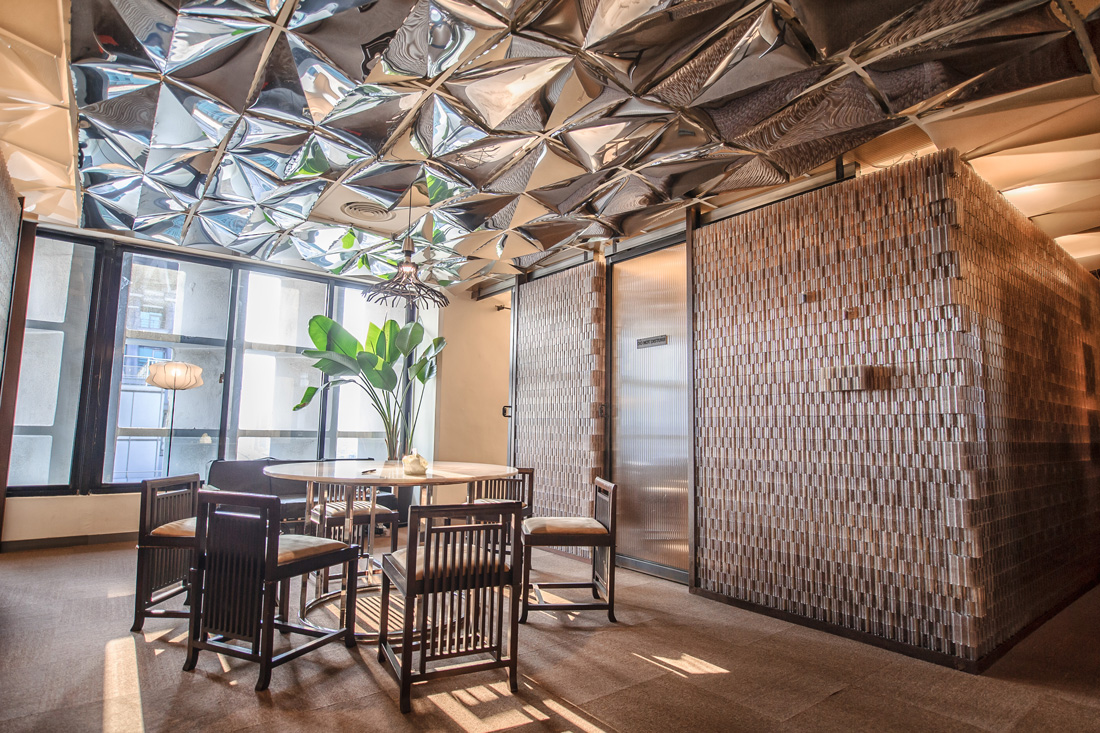
A Polli-Ber Brick wall at the Taipei office of MINIWIZ
We can really use design to elevate the value of materials. A lot of what we do at MINIWIZ is applying design and engineering so that people appreciate the value of what’s been recycled. A lot of people look at recycled goods and think, “Hey, that used to be someone else’s.” And in our culture, in Asia, sometimes there’s a bit of stigma to that. But if we re-engineer, re-design and almost make it unrecognisable, then that allows for the material to gain a new perceived value.
But what we do is not just about perception or how something looks, but also how it performs. A new composite or a newly engineered material can often perform better than it originally could have.
For example, our Polli-Ber Brick – which will be the Saturday Indesign Debate trophy – is a composite of polystyrene, which is otherwise very brittle, and rice husks from agricultural waste. Combining those in a certain proportion makes the plastic a lot less brittle. The rice husks also bring a new aesthetic quality to the material. And that also empirically improves its value.
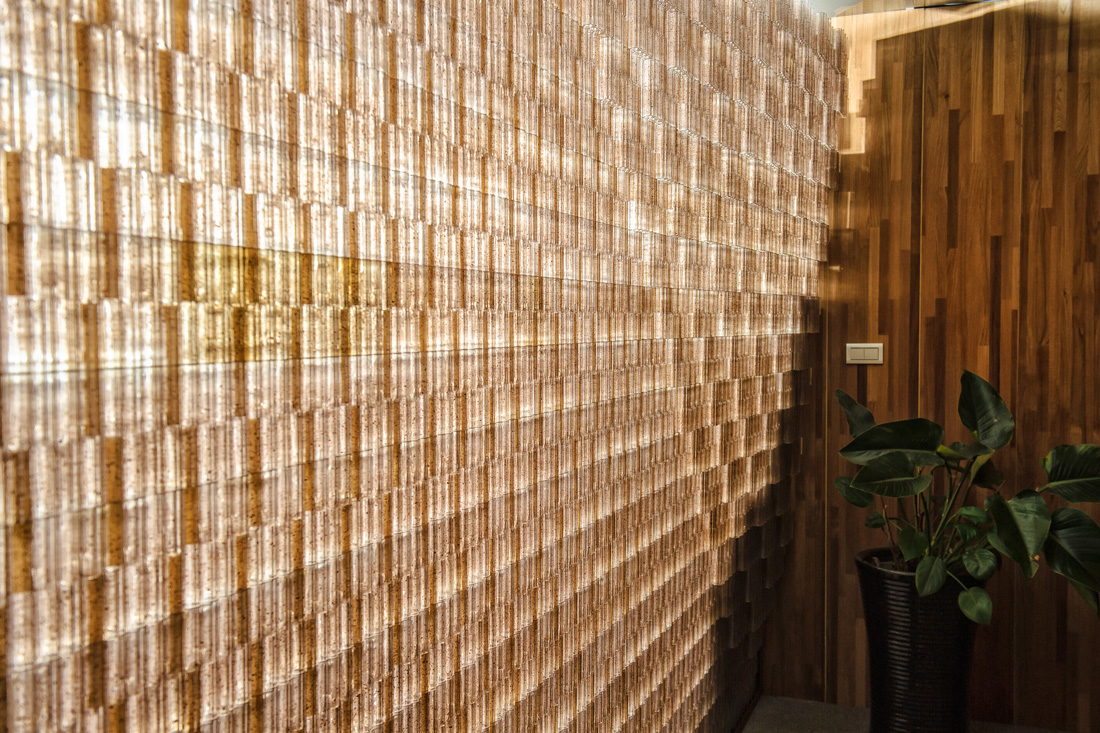
A Polli-Ber Brick wall at the Taipei office of MINIWIZ
We’ve supplied it for the backdrop of a stage set, it’s been made into feature walls (including architectural offices), and of course it’s the entrance wall at our MINIWIZ Singapore office as well. So far it’s been used in a decorative way and as partition walls, but we have also engineered a material that can also be used for exterior walls. It’s similar to Polli-Ber Brick, but we fill the cavity with concrete so it becomes fireproof as well.
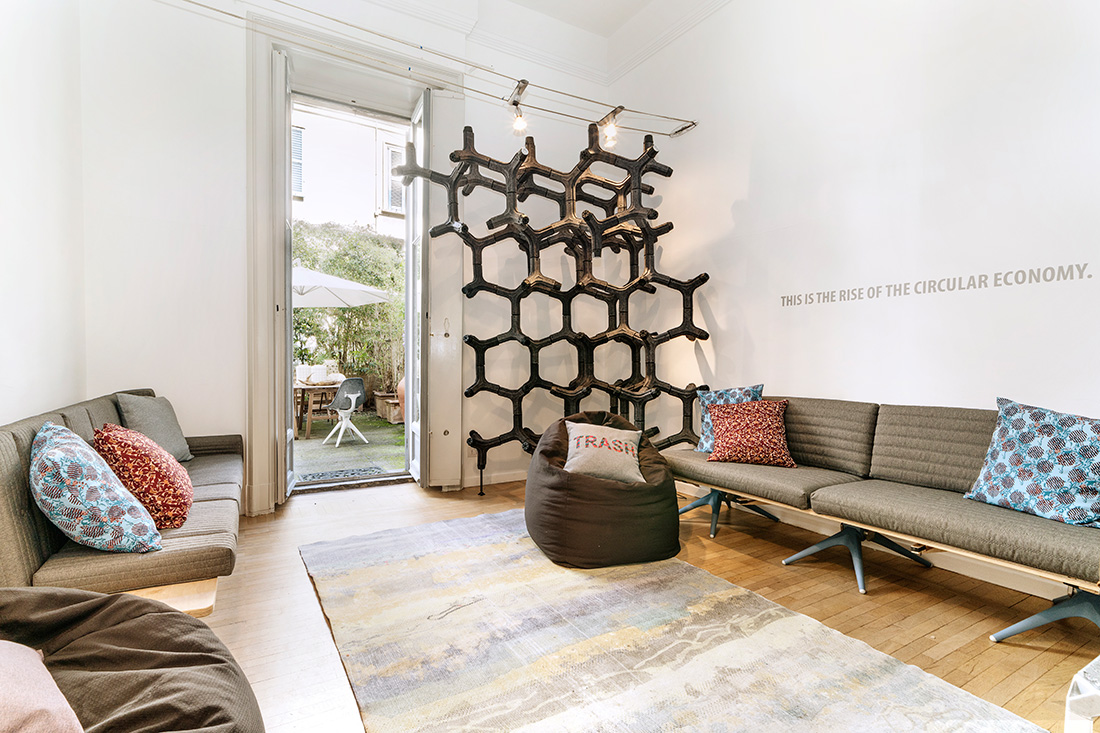
The House of Trash, Milan. The air filters in the background (lined up against the wall) are made from recycled cigarette butts and PET bottles
We work on a solutions-based model. What that means is we try to customise solutions for architects, for developers, for homeowners or whoever it is. We don’t carry a huge inventory of our products. The model is more like – what kind of space do you have? What sort of products or combinations thereof could actually make sense for what you require? So it could be partially bricks, it could be partially plastic felt wall panels – depending on what you need to do with the space and how it needs to perform. We can also start introducing furniture that’s made of recycled waste. So it’s a combination of all these things.
Therefore we don’t have an exact inventory from which you can pick and choose. We customise for you and we start making the production orders accordingly. So every product is customised, even though the building blocks are the same.
The production is currently primarily based in Taiwan [where the MINIWIZ headquarters are located], although we are in talks of bringing it closer to the SEA region to mitigate carbon footprint. We also have portable machines for producing our wall tiles and our smaller items, so we can manufacture those on site, anywhere in the world.
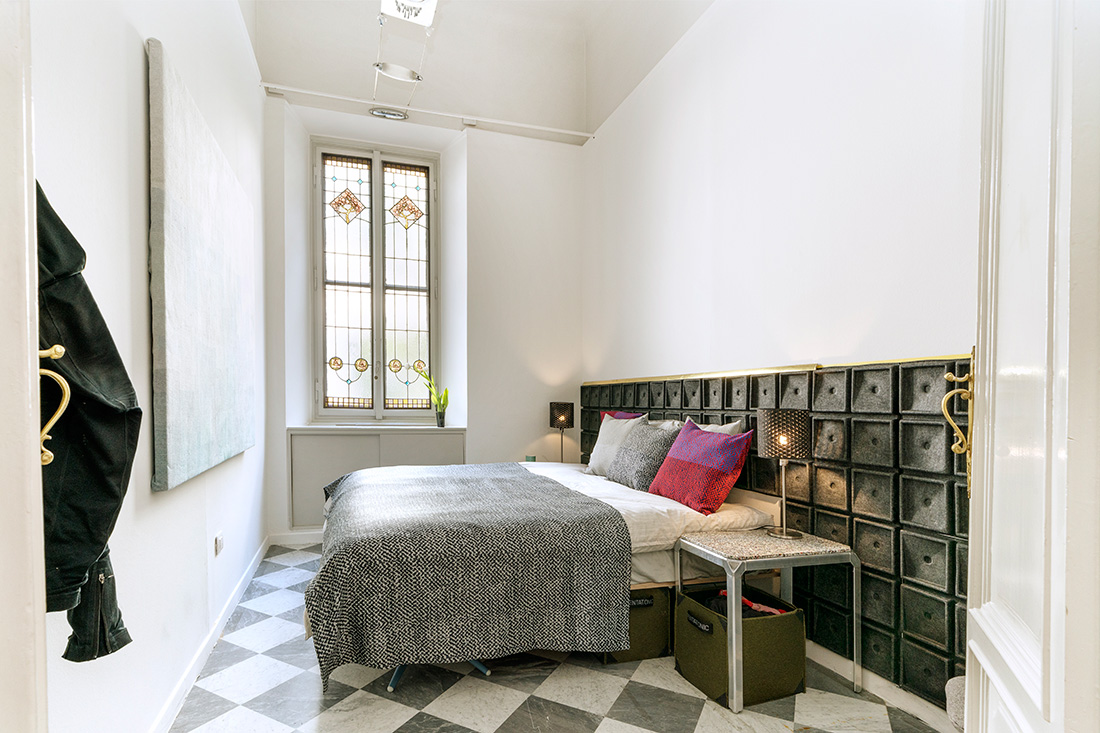
The House of Trash, Milan, where 4,300 square feet of home and office space was transformed using 100-per-cent recycled trash, without glue or VOCs
Working with the government is crucial because we need a whole culture where the circular economy is the established norm. Right now we’re not there. We need to get the framework and policy in place such that recycling becomes a way of life, and we’re sorting out our own waste before it goes into the dump. When recyclable materials are already sorted out and fairly clean, then the re-engineering and production of materials can begin.
Without those kinds of policies, people are just going to continue throwing things away the same way they have in the past. When it comes to consumers, there’s a lot of wanton throwing away of things that are only used once or twice. That’s not good enough for the sustainable nation we want to be. We need to start developing a culture that appreciates the multiple uses of materials and the constant renewal of goods into different things. That’s how we can begin to establish a circular economy.
That doesn’t mean that we cut off the consumer chain entirely, or that we are anti-consumerist. We’re not obviously, because you need growth to happen. But if we start thinking about building new things with what we currently have, without expending more carbon to generate brand new materials, that’s the beginning of closing that loop.
I’ll pull the lens a bit further back. The main problem related to the lack of recycling is the whole culture of efficiency. We’re obsessed with being efficient and with hygiene. There are multiple instances where single-use plastics are extremely necessary – primarily in the medical field. But I think it’s also about what is sensible. There’s a fine balance to keep between what is convenient and what is considerate.
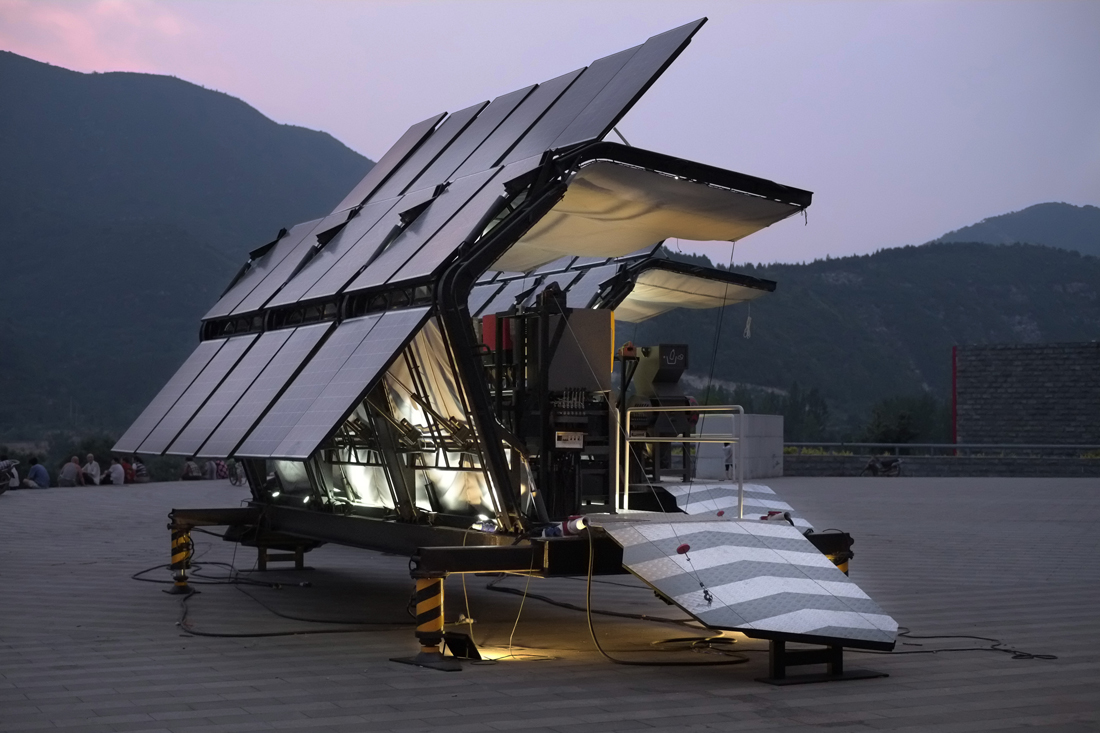
MINIWIZ’s Trashpresso – a portable machine that turns waste into products
Saturday Indesign is a confluence of the exciting new design products that are out there, and the key players in the industry – all within one day, and within a curated set of spaces. To have Indesign curate an event and have the entire community come down and engage in discourse and conversations about design – and of course the debate! – that’s a red-letter calendar event that everyone can look forward to. And I imagine it will only keep growing.
The buzz is not just the event, but also its combination with what’s out there on the web. The ecosystem that creates has become even stronger than in previous years. I’m really proud to be an Ambassador for Saturday Indesign and I’m looking forward to 12 October!
INDESIGN is on instagram
Follow @indesignlive
A searchable and comprehensive guide for specifying leading products and their suppliers
Keep up to date with the latest and greatest from our industry BFF's!

A longstanding partnership turns a historic city into a hub for emerging talent

Welcomed to the Australian design scene in 2024, Kokuyo is set to redefine collaboration, bringing its unique blend of colour and function to individuals and corporations, designed to be used Any Way!

London-based design duo Raw Edges have joined forces with Established & Sons and Tongue & Groove to introduce Wall to Wall – a hand-stained, “living collection” that transforms parquet flooring into a canvas of colour, pattern, and possibility.
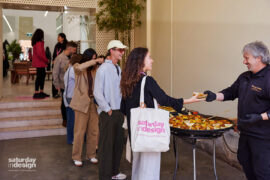
Collingwood pulsed with energy at Saturday Indesign 2025, where talks, launches and activations spilled from showrooms into the streets.
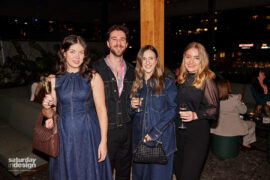
On 6th September 2025, Saturday Indesign went out with a bang at The Albion Rooftop in Melbourne. Sponsored by ABI Interiors, Woodcut and Signorino, the Afterparty was the perfect finale to a day of design, connection and creativity.
The internet never sleeps! Here's the stuff you might have missed
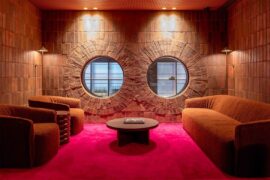
From the hottest new hotel to launches at industry’s most loved event, this local design house is making its mark.
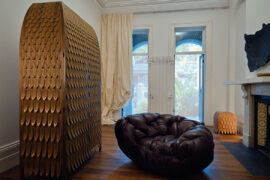
Trent Jansen’s first Sydney solo exhibition in years celebrates the poetry and stories that grow from collaborative making as well as the importance of co-creation.
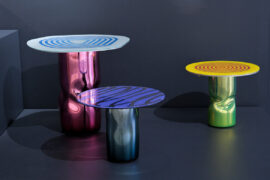
Despite its long and rich history, signwriting is a profession in decline. Will Lynes’ new show, Oily Water at Canberra Glassworks, aims to showcase the techniques of the trade to highlight its potential in design.